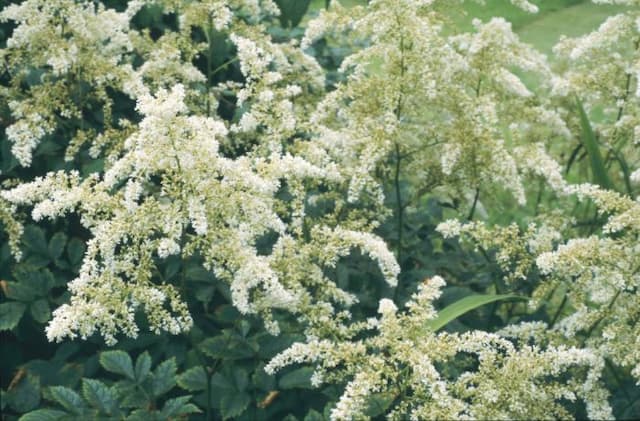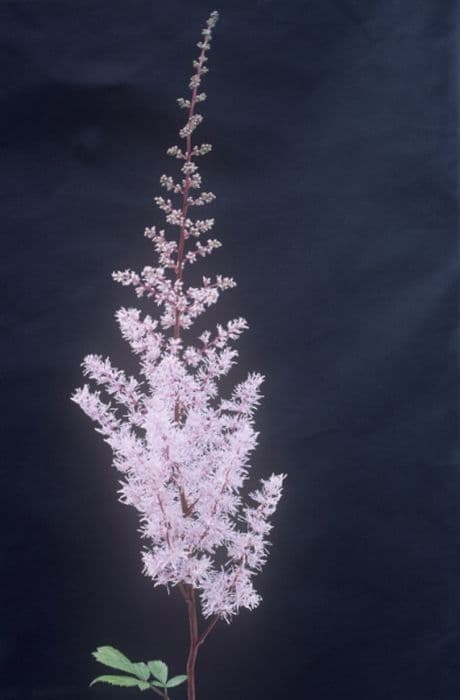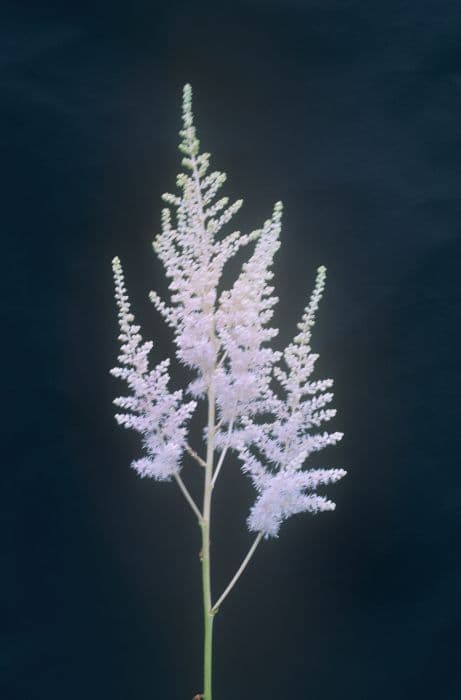Southside Seedling Saxifrage Saxifraga Southside Seedling Group (8)

ABOUT
Saxifraga Southside Seedling Group is an attractive perennial plant known for its decorative appeal and lush foliage. The appearance of the plant is characterized by its compact cushion of small, rounded leaves which are often bright green in color, giving it a dense and robust look. These leaves can sometimes have a slightly silvered appearance or display a variegation with patterns of cream or white, adding to the visual interest of the plant. Atop the foliage, this plant produces dainty flower stalks that bear an array of small, star-shaped flowers. The blooms can range in color from white to soft pink, and they are clustered at the top of each stem, creating a cloud of color above the leafy base. The flowers lend a delicate and airy feel to the plant's overall form, making it a favorite among gardeners seeking to add subtle beauty to rock gardens, borders, or alpine displays. The contrast between the sturdy leaf cushions and the graceful flowers gives it a charming and elegant presence.
About this plant
 Names
NamesFamily
Saxifragaceae.
Synonyms
Rockfoil, Stone-breaker, Saxifrage.
Common names
Saxifraga Southside Seedling Group
 Toxicity
ToxicityTo humans
Saxifraga Southside Seedling Group, commonly known as Southside Seedling saxifrage, is not typically known for its toxicity to humans. There are no widespread reports of poisoning or adverse effects from ingesting this plant. However, as with any non-edible plant, it is possible that some individuals may experience mild stomach upset or an allergic reaction if ingested. It is always advised to refrain from eating plants that are not specifically grown for consumption.
To pets
Southside Seedling saxifrage is not commonly known to be toxic to pets. There is limited information suggesting that it is harmful to dogs, cats, or other animals. Nonetheless, it is generally advised to prevent pets from ingesting plants that are not intended for animal consumption, as they could potentially cause gastrointestinal upset or an allergic reaction in sensitive pets. If you suspect your pet has eaten a substantial amount of any plant and is showing signs of illness, contact your veterinarian.
 Characteristics
CharacteristicsLife cycle
Perennials
Foliage type
Evergreen
Color of leaves
Green
Flower color
White
Height
0.5 feet (15 cm)
Spread
1 foot (30 cm)
Plant type
Herb
Hardiness zones
5
Native area
Europe
Benefits
 General Benefits
General Benefits- Ornamental Appeal: The Saxifraga Southside Seedling Group offers beautiful, delicate flowers that enhance the aesthetic appeal of gardens and landscapes.
- Low Maintenance: This plant is known for being easy to care for, requiring minimal upkeep once established.
- Garden Biodiversity: Its presence contributes to the overall biodiversity of a garden ecosystem by providing habitat and resources for various insects.
- Drought Tolerance: Once established, it has a degree of drought tolerance, reducing the need for frequent watering.
- Ground Cover: This Saxifraga can be used as an effective ground cover, helping to reduce weed growth and soil erosion.
- Seasonal Interest: It offers seasonal interest with its attractive blooms typically appearing in spring or summer, depending on the climate.
- Rock Gardens: It is particularly well-suited for rock gardens, thriving in the crevices and providing a naturalistic appearance.
- Container Gardening: The Saxifraga Southside Seedling Group is also suitable for container gardening, allowing those with limited space to enjoy its beauty.
 Medical Properties
Medical PropertiesThis plant is not used for medical purposes.
 Air-purifying Qualities
Air-purifying QualitiesThis plant is not specifically known for air purifying qualities.
 Other Uses
Other Uses- Saxifraga Southside Seedling Group, also known as London Pride, can be used to create intricate rock garden designs due to its clumping habit and attractive foliage.
- The plant's ability to grow in cracks and crevices makes it suitable for use in green roofing projects, which can provide added insulation to buildings.
- London Pride can be planted between stepping stones or pavers in a garden walkway, where it can tolerate light foot traffic and soften the hardscape.
- Its mat-forming nature allows for it to be used in soil erosion control on slopes or banks, as it can help to stabilize the soil with its roots.
- The plant may be utilized in fairy gardens due to its small size and delicate features, adding a touch of whimsy to miniature landscapes.
- Because of its texture and color, London Pride can be used in floral arrangements to provide a contrasting green base for other flowers.
- The flowers of Saxifraga Southside Seedling Group can serve as indicators of seasonal changes in educational gardens, as they typically bloom in late spring.
- This plant can be placed in the gaps of dry stone walls to enhance their aesthetic, as it thrives in well-drained conditions and can decorate otherwise barren stonework.
- In wildlife gardens, the nectar-rich flowers of London Pride attract pollinators such as bees and butterflies, thereby supporting biodiversity.
- Artistic containers and alpine troughs can benefit from the addition of Saxifraga Southside Seedling Group, as it adds texture and visual interest with minimal maintenance requirements.
Interesting Facts
 Feng Shui
Feng ShuiThe London Pride is not used in Feng Shui practice.
 Zodiac Sign Compitability
Zodiac Sign CompitabilityThe London Pride is not used in astrology practice.
 Plant Symbolism
Plant Symbolism- Perseverance: Saxifragas are known for their resilience and ability to grow in rocky, challenging conditions, symbolizing the strength to persevere through hardships.
- Protection: With its dense foliage, the Saxifraga forms a mat-like ground cover, which can be perceived as a symbol of shelter and protection.
- Adaptability: Given its capacity to thrive in less than ideal conditions, Saxifraga represents the ability to adapt to various environments and situations.
- Timelessness: As a perennial, the Saxifraga can be seen as representing enduring presence and the passage of time.
- Purity: The often white blooms of the plant are associated with purity and innocence.
- Affection: In some traditions, Saxifragas are given as tokens of love and affection due to their delicate and appealing flowers.
 Water
WaterThe London Pride, which is a common name for Saxifraga Southside Seedling Group, prefers evenly moist soil. It should be watered thoroughly, allowing the excess water to drain away to prevent waterlogging. During the growing season, in spring and summer, water the plant using approximately 8 ounces of water per week, depending on the environment's humidity and temperature. As the plant enters dormancy in the fall and winter, reduce watering to approximately 4 ounces every two weeks. It's crucial not to let the soil dry out completely but also to avoid overwatering, as this can lead to root rot.
 Light
LightLondon Pride thrives best in partial shade to full sunlight. This plant will appreciate a spot that receives morning sunlight and is protected from the intense heat of the afternoon sun. Ideal conditions include bright, indirect light throughout the day. Avoid placing it in deep shade as it may hamper the plant's growth and flowering potential.
 Temperature
TemperatureLondon Pride prefers cooler temperatures and can survive in a range that generally lies between 40 and 75 degrees Fahrenheit. It can tolerate temporary dips down to about 30 degrees Fahrenheit. The ideal temperature range for growing London Pride is between 50 and 70 degrees Fahrenheit, which encourages lush growth and flowering.
 Pruning
PruningPruning London Pride is mainly done to remove dead or damaged foliage and to maintain its attractive shape. It's best to prune after flowering, typically in late summer. Deadheading spent flowers can encourage a second bloom. Regular light pruning can be carried out as needed throughout the growing season to keep the plant looking tidy.
 Cleaning
CleaningAs needed
 Soil
SoilThe Saxifraga Southside Seedling Group, commonly known as Southside Seedling saxifrage, thrives in a well-draining soil mix that's rich in organic matter. A suitable mix can be made from equal parts of loamy soil, peat, and sharp sand, providing adequate drainage and aeration. The ideal soil pH for this plant ranges from slightly acidic to neutral (pH 6.0 to 7.0).
 Repotting
RepottingSouthside Seedling saxifrage should be repotted every 2 to 3 years to refresh the soil. Repotting is best done in early spring before the new growth begins. This process helps prevent the plant from becoming root-bound and allows for the addition of fresh soil mix that supports healthy growth.
 Humidity & Misting
Humidity & MistingSouthside Seedling saxifrage prefers moderate to high humidity levels but can tolerate the lower humidity found in most homes. Ensuring good air circulation around the plant will help maintain appropriate humidity conditions without the need for additional humidity measures.
 Suitable locations
Suitable locationsIndoor
Provide bright indirect light and cool temperatures for this saxifrage.
Outdoor
Plant in partial shade with well-draining soil and sheltered spot.
Hardiness zone
Southside Seedling saxifrage is suitable for USDA zones 5-8.
 Life cycle
Life cycleSaxifraga Southside Seedling Group, commonly known as Southside Seedling saxifrage, begins its life as a seed sown in moist, well-drained soil in a cold frame during spring or summer. After germination, the seedling emerges and develops a rosette of leaves, enduring through the seasons. The plant then enters a vegetative stage, during which it grows and establishes a strong root system. Once mature, usually after a couple of years, it produces flower stalks bearing clusters of star-shaped flowers in spring or early summer, typically white to pale pink in color. After pollination, usually by insects, the fertilized flowers develop into capsules containing numerous small seeds. The plant completes its life cycle when these seeds are dispersed by wind or water, able to germinate and produce new plants, with the parent plant potentially continuing to grow and flower for several years.
 Propogation
PropogationPropogation time
Spring
The most popular method for propagating Saxifraga Southside Seedling Group, commonly known as Saxifraga, is by division. Spring or early fall is the optimal time to carry out this process when the plant is not in active bloom. To propagate by division, carefully lift the clump from the ground, ensuring you preserve as many roots as possible. Using a sharp knife or spade, divide the clump into smaller sections, each with a portion of the root system and several growth buds. Replant the divisions at the same depth they were growing before, spaced approximately 6 to 9 inches (15 to 23 centimeters) apart to allow room for growth. Water the new plantings well to help establish them. This method allows gardeners to efficiently produce new plants that are genetic clones of the parent, ensuring uniformity in the garden.









